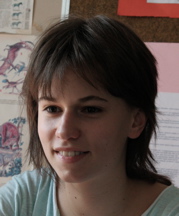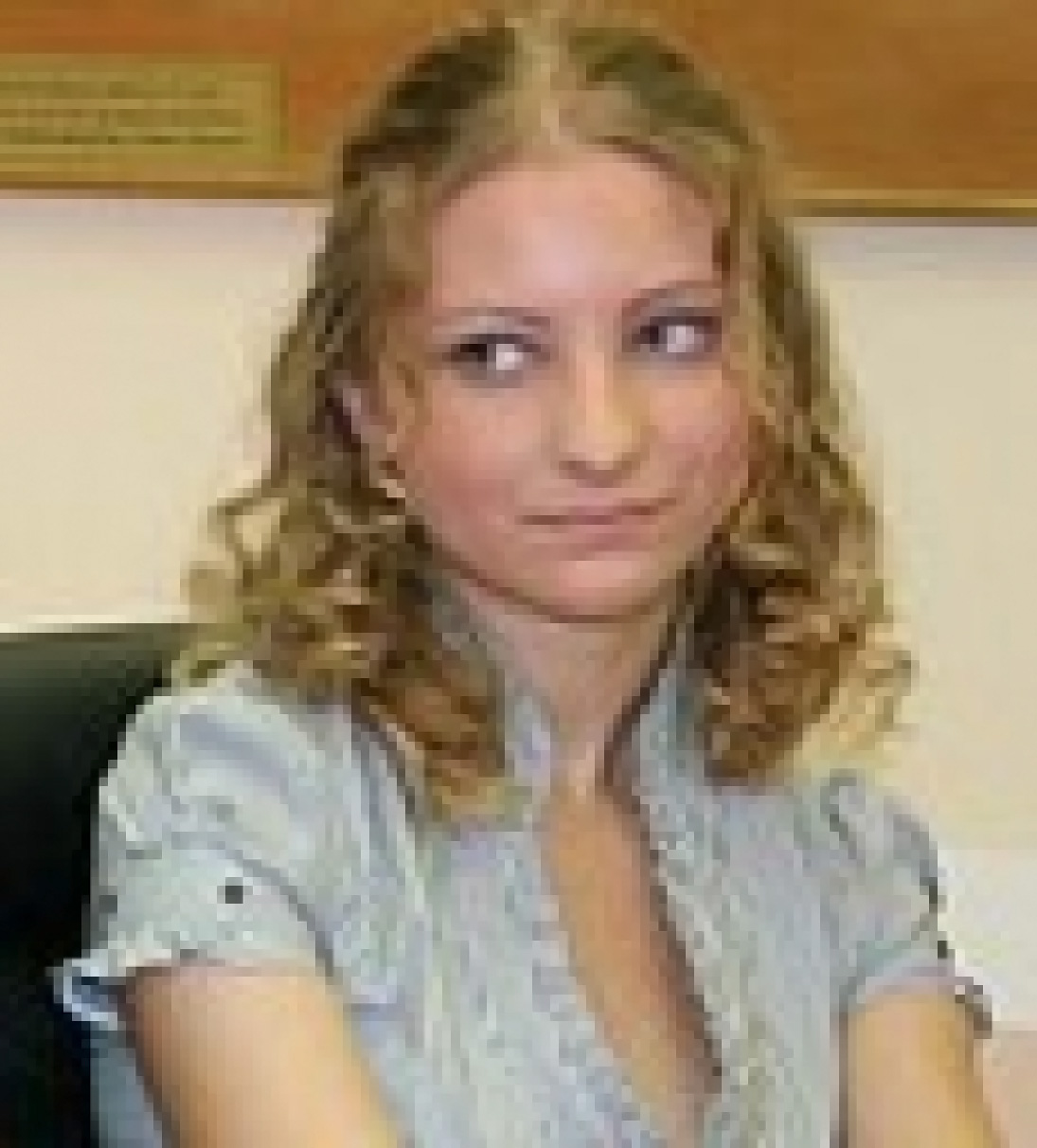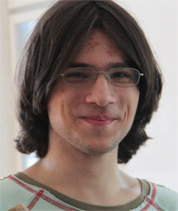Projects
Machine learning algorithms for face recognition
 Humans are very effective at face recognition, but can we teach computers the same skill? Difficult problems such as finding criminals from security surveillance tapes, indentifying computer users using a web camera, tagging friends on pictures from on-line social networks and many others would greatly benefit from fast and automatized face recognition. Theoretical foundations from the field of machine learning, image analysis and pattern recognition might help us solve these problems. Furthermore, they are not limited to this usage solely - with minimal changes, it is possible to discover symptoms of disease in medical tests, discern music genres, reading human handwriting and many other operations, up to now limited only to humans.
Humans are very effective at face recognition, but can we teach computers the same skill? Difficult problems such as finding criminals from security surveillance tapes, indentifying computer users using a web camera, tagging friends on pictures from on-line social networks and many others would greatly benefit from fast and automatized face recognition. Theoretical foundations from the field of machine learning, image analysis and pattern recognition might help us solve these problems. Furthermore, they are not limited to this usage solely - with minimal changes, it is possible to discover symptoms of disease in medical tests, discern music genres, reading human handwriting and many other operations, up to now limited only to humans.
The mission of this project will be the theoretical study of pattern recognition techniques and their practical application in the form of a face recognition program. We will implement the perceptron algorithm which is inspired by a signal transmission in neuron. To succesfully implement this algorithm we will go through a modern method of programming - the object-oriented paradigm. Additionally we will use image processing techniques to analyse input images and prepare them for the recognition process. In the end we will compare our implementation with the advanced support vector machine algorithm to check the quality of our results.
Drazen Lucanin
University of Zagreb, Croatia
Drazen is a fourth year student of computer science at the University of Zagreb. His main interests are program engineering and topics in the field of computer science, such as theoretical study of algorithms and artificial intelligence. During his studies and in his free time he took has done many different program sollutions - from compilers to video-conferencing clients, using diffrent implementation technologies. He is currently studying advanced user interfaces and graphical programming.
Impact of stress on the plant's ability to fight against a pathogen
 Stress is a systematic response of an organism to a change in the environment. Scientists are still intrigued with this phenomenon, which has such a wide range of different, sometimes even completely opposite effects on individuals. But humans are not the only living creatures that can live stressful lives. A good example is stress in plants: it is more versatile and complex than in animals and other organisms. The reason lays in the fact that plants are sessile organisms, so they cannot run away from various stressful conditions in their close proximity.
Stress is a systematic response of an organism to a change in the environment. Scientists are still intrigued with this phenomenon, which has such a wide range of different, sometimes even completely opposite effects on individuals. But humans are not the only living creatures that can live stressful lives. A good example is stress in plants: it is more versatile and complex than in animals and other organisms. The reason lays in the fact that plants are sessile organisms, so they cannot run away from various stressful conditions in their close proximity.
In this project, we will study changes caused by three different types of stress in plants: photostress, increased salinity and the virus attack. Plants cope with stress on different levels using different mechanisms. We will focus on changes at the molecular level (enzymatic and metabolic activities, synthesis of stress hormones, secondary metabolites, antioxidants...) and explore whether stress improves plants resistance or makes it more susceptible to the virus. By exposing the plant to multiple stress factors, we will find which combination has the best or worst consequences for plants. To identify the molecular mechanisms responsible for the observed difference in stress response, we will use methods like thin layer chromatography, virus purification and inoculation, native gel-electrophoresis of proteins, chloroplast isolation and test for phenol compounds.
Kristina Majsec
University of Zagreb, Croatia
Kristina is a 2nd year master student of molecular biology at the University of Zagreb. She harbors a wide range of interests, from exploring mechanisms of cancer treatment to computational biology of protein behavior. Kristina has participated on S3 2008 as a swapshop leader and has held a lecture at S3++ 2009.
Petra Pusic
University of Zagreb, Croatia
Petra is a 2nd year master student of molecular biology, University of Zagreb. Her main interest areas are microbiology with special focus on host-pathogen interactions and methagenomics. Petra has participated at S32008 and S3++ 2007 as a swapshop leader and co-leader.
Examining the development of multiresistant bacteria
 Bacteria are the origin and the engines of the life on the Earth. These ubiquitous microorganisms are present in soil, in water, deep in the crust of the Earth, as well as in the organic matter and the living bodies of plants and animals. There are approximately 5×10^30 bacteria on the Earth and they form 90% of the world's biomass. The number of bacterial cells in the human flora is approximately ten times as big as the number of human cells in the body, with large numbers of bacteria on the skin and in gut. Although many have an important protective role in our immune system, several hundred species are pathogenic, and can cause infectious diseases causing the death of millions of people all over the world. Furthermore, their biochemical trickiness and antibiotic resistance are fighting against our antibiotics and vaccines. In the industry field, bacteria play important roles in the sewage works, production of cheese and yoghurt through fermentation, as well as in biotechnology and the manufacturing of antibiotics and other chemicals. The challenge remains to understand the difference between beneficial and harmful bacteria, as well as to fight pathogenic species.
Bacteria are the origin and the engines of the life on the Earth. These ubiquitous microorganisms are present in soil, in water, deep in the crust of the Earth, as well as in the organic matter and the living bodies of plants and animals. There are approximately 5×10^30 bacteria on the Earth and they form 90% of the world's biomass. The number of bacterial cells in the human flora is approximately ten times as big as the number of human cells in the body, with large numbers of bacteria on the skin and in gut. Although many have an important protective role in our immune system, several hundred species are pathogenic, and can cause infectious diseases causing the death of millions of people all over the world. Furthermore, their biochemical trickiness and antibiotic resistance are fighting against our antibiotics and vaccines. In the industry field, bacteria play important roles in the sewage works, production of cheese and yoghurt through fermentation, as well as in biotechnology and the manufacturing of antibiotics and other chemicals. The challenge remains to understand the difference between beneficial and harmful bacteria, as well as to fight pathogenic species.
In this project, we will examine different bacterial strains from the laboratory and those collected from our environment. To distinguish between harmful and beneficial species, we will use microbiology techniques like Gram staining, growing tests and biochemical reactions. We will use antibiograms to inspect bacterial resistance to common antibiotics and study how these species change their resistance profile causing the development of multiresistant strains that cause more and more deaths each year. Finally, we will discuss strategies for fighting against infectious diseases caused by microorganisms.
Adrienn Nikoletta Kocsis
Semmelweis University, Technical University Budapest, Hungary
Adrienn is a medical student at the Semmelweis University and a biomedical engineer student at the Technical University in Budapest. She is currently working as a research student in the Institute of Medical Microbiology. Her research field is connected to the human papillomavirus, focusing on the carcinogenesis of the HPV and the function of its molecular control mechanisms. Her further interests include biosensors usage in in vitro diagnostic elements and microfluidic systems. Adrienn was a participant of Summer School of Science as a high school student in 2005.
Diffusion in the ribosomal tunnel
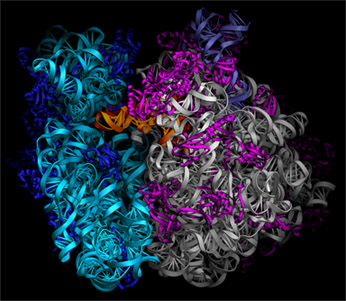 Diffusion has been extensively explored in field of biophysics due to importance of diffusion processes for living cells and organisms. Molecular diffusion in cellular compartments and between them is the governing transport mechanism on small distance scales. Diffusion inside of the ribosomal tunnel, a cellular 'tube' at which's one side protein synthesis takes place and at the other the protein polypeptide chain emerges, has been attracting more and more research attention. Experimental work is for this question quite limited and leaves place to computational approaches.
Diffusion has been extensively explored in field of biophysics due to importance of diffusion processes for living cells and organisms. Molecular diffusion in cellular compartments and between them is the governing transport mechanism on small distance scales. Diffusion inside of the ribosomal tunnel, a cellular 'tube' at which's one side protein synthesis takes place and at the other the protein polypeptide chain emerges, has been attracting more and more research attention. Experimental work is for this question quite limited and leaves place to computational approaches.
Within this project, we will simulate the diffusion inside of the real ribosomal tunnel geometry, using a simple but physically correct model of Brownian motion with reflective boundaries. We will compute a Markov chain Monte Carlo algorithm to perform a 3D random walk of diffusing particles. By letting the molecules achieve a random walk, by which it is possible to find a way out of the tunnel, we want to record times needed for particles to exit. Our main interest will be the influence of tunnel geometry on particles diffusing inside, as for example antibiotics macrolides that block the protein synthesis. Except the real tunnel geometry representations, a pencil tube, simpler analogous 'tunnel' system, will be generated for purposes of validation and testing. Participants of this project will face the challenge to deal with interdisciplinarity, as they will be exposed to an interesting combination of biology, physics, mathematics, programming and statistics.
Inja Radman
ETH Zurich, Switzerland
Inja is a Master student in biophysics & structural biology at ETH Zurich, Switzerland. Her main research interests are protein synthesis and folding, protein engineering and proteomics. She is participating in Summer School of Science since 2005, twice as a high school student and later as workshop leader.
Ecology and ethology of the Mediterranean black widow spider
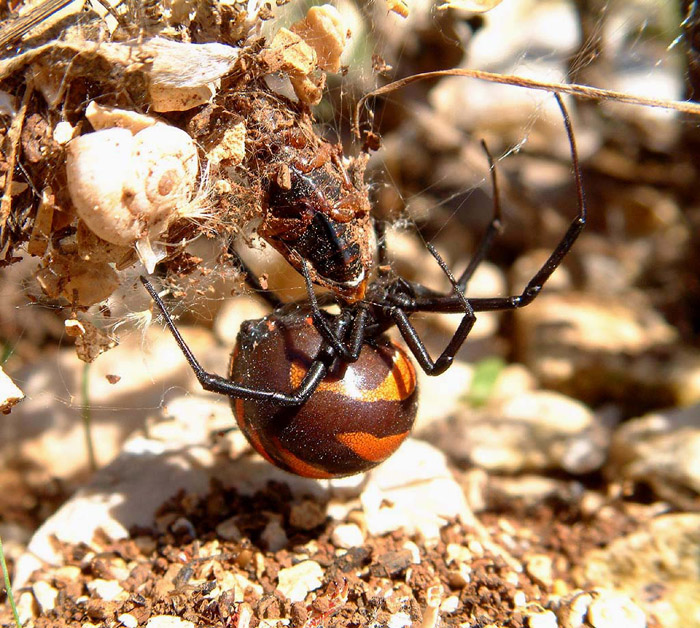 Black widow spiders are known worldwide for their venom and unusual mating habits. On the other hand the ecology and ethology (behavior) of these spiders is mostly unknown and varies substantially between species. North American and Australian species are extensively researched, while the Mediterranean black widow spider (Latrodectus tredecimguttatus), which also inhabits the coastal regions of Croatia, is still fairly unknown. In 2002, on the Summer School of Science in Visnjan, a group of participants researched the distribution and feeding behaviors of L. tredecimguttatus populations on the Istrian peninsula. It was interesting to see that the obtained results differed from data found in literature, opening this topic for various subsequent research.
Black widow spiders are known worldwide for their venom and unusual mating habits. On the other hand the ecology and ethology (behavior) of these spiders is mostly unknown and varies substantially between species. North American and Australian species are extensively researched, while the Mediterranean black widow spider (Latrodectus tredecimguttatus), which also inhabits the coastal regions of Croatia, is still fairly unknown. In 2002, on the Summer School of Science in Visnjan, a group of participants researched the distribution and feeding behaviors of L. tredecimguttatus populations on the Istrian peninsula. It was interesting to see that the obtained results differed from data found in literature, opening this topic for various subsequent research.
The main goal of this project is to give a general idea on both field and laboratory research of an animal species, in our case the Mediterranean black widow spider. Fieldwork will firstly consist of various population density measurements in order to determine potential changes due to harsh environment in the past few years (road urbanization, abundant snow during winter etc.), and secondly, collection of food samples in order to compare feeding behaviors of populations on different habitats and populations from 2002. Laboratory work will consist of one ethology experiment: we are interested if black widow spiders change the design of their web as a result to food abundance. Participants will be encouraged to design their own potential research projects concerning the Mediterranean black widow spider or some other species to their liking.
Petra Korlevic
University of Zagreb, Croatia
Petra is a 1st year master student of molecular biology at the University of Zagreb. She is interested in a wide range of topics from evolution to animal behavior and physiology. Apart from science she is interested in drawing photography and reading comics. She spends most summers either working as a project leader on the Youth Science Camp in Visnjan or as a paparazzi on all other summer schools.




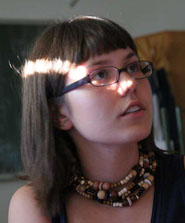
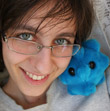
 British Parliamentary Debate is one of the most popular forms of academic debate widely accepted in all English speaking regions: United Kingdom, Ireland, Canada, United States as well as in most parts of Europe, Africa and Asia. It is also adopted as an official style of the World Universities Debating Championship and European Universities Debating Championship. The four teams, each consisting of two speakers, take roles of Government and Opposition to debate on a particular topic. All the speakers have only 15 minutes to prepare their 7 minute speeches before the debate begins. The participants will learn basic rules of parliamentary debate and how to prepare and deliver their speech. They will also have an opportunity to participate in a short debate.
British Parliamentary Debate is one of the most popular forms of academic debate widely accepted in all English speaking regions: United Kingdom, Ireland, Canada, United States as well as in most parts of Europe, Africa and Asia. It is also adopted as an official style of the World Universities Debating Championship and European Universities Debating Championship. The four teams, each consisting of two speakers, take roles of Government and Opposition to debate on a particular topic. All the speakers have only 15 minutes to prepare their 7 minute speeches before the debate begins. The participants will learn basic rules of parliamentary debate and how to prepare and deliver their speech. They will also have an opportunity to participate in a short debate.